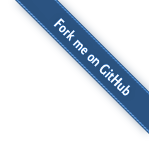
Social bias and fairness in NLP

Learned continuous representations for language units have taken the field by storm. It was the first trembling steps of making neural networks useful for natural language processing (NLP), and promised a future where representations could embed more semantical context and empower downstream solutions. NLP has now seen some of the progress that previously happened in image processing: the availability of increased computing power and the development of algorithms have allowed people to train larger models that perform better than ever. Such models also make it possible to use transfer learning for language tasks, thus leveraging large widely available datasets. In 2016, Microsoft launched Tay, a chatbot on Twitter that was taken offline 16 hours later because of its racist and offensive tweets. The same year, Bolukbasi, et.al., presented their paper "Man is to Computer Programmer as Woman is to Homemaker? Debiasing Word Embeddings", shedding lights on some of the gender bias that was available in trained word embeddings at the time. Datasets obviously encode the social bias that surrounds us, and models trained on that data may expose the bias in their decisions. In some situations however, it may be desirable to limit the dependencies on certain attributes in the data. It is important to be aware of what bias is encoded in a dataset, and what features a machine learning system is basing its predictions on. Sometimes, it may also be important to be able to control what the predictions depend on. To this end, some solutions have been proposed to limit the expression of social bias in NLP systems. These include techniques such as data augmentation and representation calibration. Similar approaches may also be relevant for privacy and disentangled representations. In this seminar, we'll discuss some of these issues, and go through some of the solutions that have been proposed recently.
RISE Learning Machines Seminars, 2020-02-20
Olof Mogren